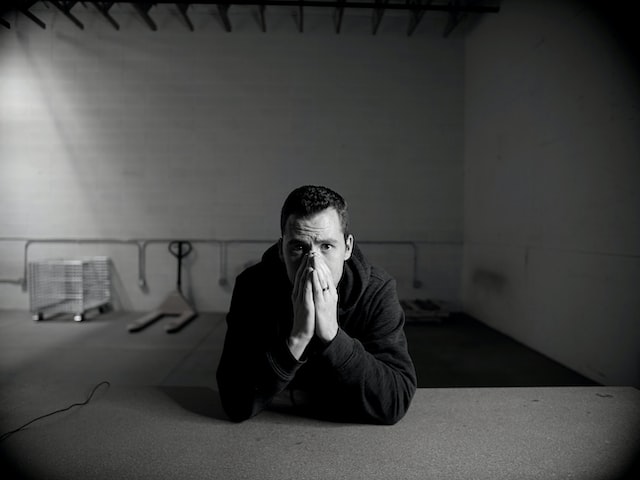The other day I had a meeting with a client whose objective was to help her decide on a new opportunity she was considering. Her decision meant she would have to close the existing business she had poured her heart and soul into for many years. The business had suffered some recent setbacks but remained profitable and stood a good chance of rebounding, whereas the new opportunity was certainly not a sure thing. Her question was, how do you know when it is time to quit and move on vs. continue to act with grit and persevere in her current business?
This client was unique because she was preparing to make a conscious decision to quit her existing business and move on to a new opportunity. In most cases, business owners fail to make a conscious decision and continue to maintain the status quo of operating a business or pouring money into a project, failing to gain traction long after all the signals tell them it’s time to quit. The problem is that quitting requires making a conscious decision. Rather than making a decision they may regret later, most business owners choose to make no decision at all.
However, when people stick with the status quo, they fail to realize that it is also a decision. By continuing to do something that no longer makes you happy or keeps depleting your financial reserves, you are making a choice.
When we make a conscious decision to either stay the course or change direction, we consider the pros and cons that would occur from the decision. However, when we choose to ignore the signals and make no decision, we fail to consider the potential gains and losses related to our choice.
What prevents most people from making a conscious decision is the fear that changing course may potentially produce a worse outcome. The problem with this way of thinking is that we don’t take into account the financial and emotional toll of not changing course.
In my client’s case, I asked, “How likely is it that in a year’s time you will be in a better place if you continue to run your current company or if you embark on a new opportunity?”
Her response was, “If I continue to operate my business, we will likely recover as we have in the past, but I will still feel overworked and stressed out. However, if I move on, there is a 50/50 chance that I will be in a better place a year from now.”
“50% is better than zero,” I replied. Her current business was causing her lots of stress, and there was no likelihood that it would ever get any better. At least the new opportunity had the potential to make her happier, but there was no guarantee.
I’m not entirely sure which direction my client chose, but prospect theory tells us that we are more biased toward loss aversion than toward the prospect of gain. Therefore, most people remain trapped in the status quo. Our irrational propensity toward loss aversion leads many business owners to wait too long to pull the plug on a failing project or to walk away from a business that is no longer making them happy or is losing money. They fail to act until the pain becomes too much to bear.
So, how do we know when it’s the right time to quit?
An often applied decision-making theory is to create a list of pros and cons. Annie Duke, the author of Quit: The Power of Knowing When to Walk Away, says listing the pros and cons is not a good decision-making tool in this case. She says that listing the pros and cons just amplifies the person’s existing biases.
For example, if you’re biased to not wanting to take a leap, you are likely to include more reasons on the cons side of the decision ledger. Since we are naturally biased by fear of loss, we also tend to naturally focus more on the negative consequences than the positive outcomes. Annie adds that listing the pros and cons also does not take into account the probability of outcomes of any of the items listed.
How to Decide
The best way to decide to quit or keep the status quo is to involve a mentor who does not have a dog in the hunt. It is way easier for your mentor to see both sides in a much less biased way.
However, in the absence of a mentor, don’t make the decision in the moment. It is hard to decide to eat healthy when there is a fresh bowl of chips and dip in front of you. Instead, define a deadline to make the decision. Ask yourself, “How long can I live with the status quo?” if the answer is 90 days, then ask, “What will it look like if, in 90 days, I do decide to quit and move on?” Write down the kill criteria that would cause you to quit and walk away from the status quo. Then do the same for the stay-the-course criteria and list what would make you not quit.
Then after the period you defined, 90 days in our example, look at both lists and review the signs that are telling you to quit or that things are turning around and you should stay the course.
Making a list of criteria in advance that you will use to decide whether to quit or stay the course and deferring the decision until a later date gives you time to gather the necessary information to make a more objective decision.
The deadline you set is also very important. If you fail to set a specific date, when you see movement towards staying the course, the tendency is to extend the time of decision-making to see what happens. Suppose we don’t allow ourselves to be constrained by a specific date to make a decision, in that case, we are very good at rationalizing a way to stay in the status quo because we are afraid of making the decision to quit.
So, in conclusion, when you are faced with a decision to abandon a current project or walk away from a business, remember that not making a decision is, in fact, a decision. Never make a hasty decision to change course in the moment. Instead, set a realistic date sometime in the future to make the decision. Then, list the criteria you will use to tip your decision in favor of staying the course or abandoning it.
Is it time to walk away or quit an activity, or are you failing to make a conscious decision and living with the status quo because it just requires no decision?












